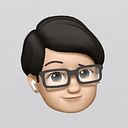Trending: What’s on your BrainRAM?
I don’t remember the first time, I saw this trend on the Internet. The whole “What’s on your — device — “ trend. When I was reading Steve Jobs’s autobiography by Walter Isaacson, I remember the first mention of this after the iPod’s launch in 2001. Many celebrities were asked the question during interviews, “What’s on your iPod?”. Basically what all songs they had on their playlist. Could have started as Apple’s marketing strategy, I am not sure but a brilliant one for sure.
What type of songs one has on his playlist becomes a definition for his or her personality and probably still is. With the Internet Boom, there were more of such videos on YouTube. More about “What’s on your Smartphone?”, “What’s on your iPad?”, “What’s on your PC?” etc etc.
Its become such a common question that I wish to ask it myself. For a device you are born with it. You may or may not disclose it publicly but make sure you have an answer for it:
What’s on your BrainRAM?
Sounds funny, right? But you need to answer it honestly. Not what’s on your brain in total. That could be a long list. Just the RAM of your brain. For the non-tech geeky guys, let me explain this new concept:
Well, there’s your Brain doing all the stuff you want it to do (handling your worries, fishing up old memories, involuntarily making you sleep while you read this); basically your long-term memory and then there is your BrainRAM which is a smaller portion of your brain which takes care of all the tasks active right now (like reading this blog, probably). It’s your short-term memory, in short.
Not very surprisingly, this BrainRAM of yours is smaller in size and you want to make sure you use it wisely. Unlike your computer or smartphone, it can’t handle multiple tasks at the same time (until you optimize it). In his book, ‘Hyperfocus’, Chris Bailey calls it the attention space.
I like to visualize it like a 2x2 Matric with semi-circles around the edges of the square.
The square matrices can store 4 major tasks at a time, based on Miller’s Law*; tasks that have taken place or will take place in the next 12 hours) and the semi-circles define your emotional states like Happy, Moderate or Sad depending on 4 essential things:
- your relationships with people around you, presently
- your emotions regarding present work/study
- your reflection on future events
- your reflection on past events
Depending on whether these emotional states or reflections are positive, negative, or moderate colors these semi-circles (Positive = Green, Negative = Red, Moderate = Orange/Yellow).
Write down the 4 tasks that you are presently focusing on or are going to focus on in the next 12 hours and then color the semi-circles according to the criteria mentioned above.
Woah! Congrats, this might perhaps the cheapest Brain Mapping Experiment you participated in and you have successfully also deciphered “What’s on your BrainRAM?”
*Miller’s Law: The average person can only keep 7 (plus or minus 2) items in their working memory. I have taken into account the emotional and mental aspects too which is why there are 4 major tasks (squares) and 4 mental and emotional aspects (semi-circles) surrounding them. Your mental and emotional states also affect your efficiency in the tasks you carry out. You can read more about it here.
-Aditya Darekar
